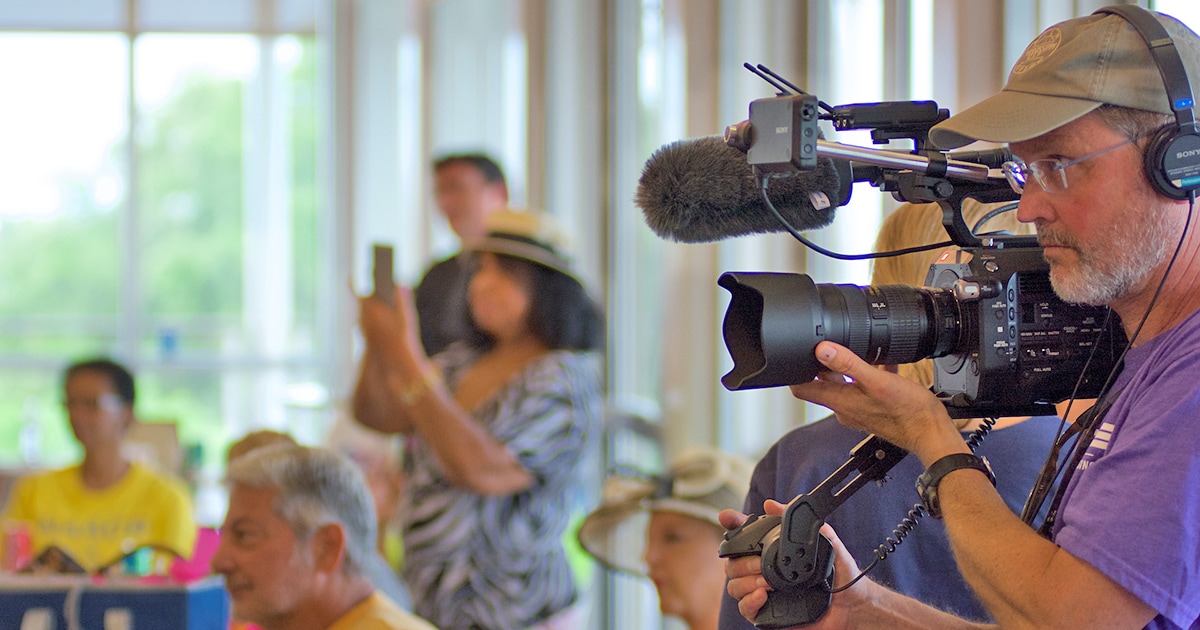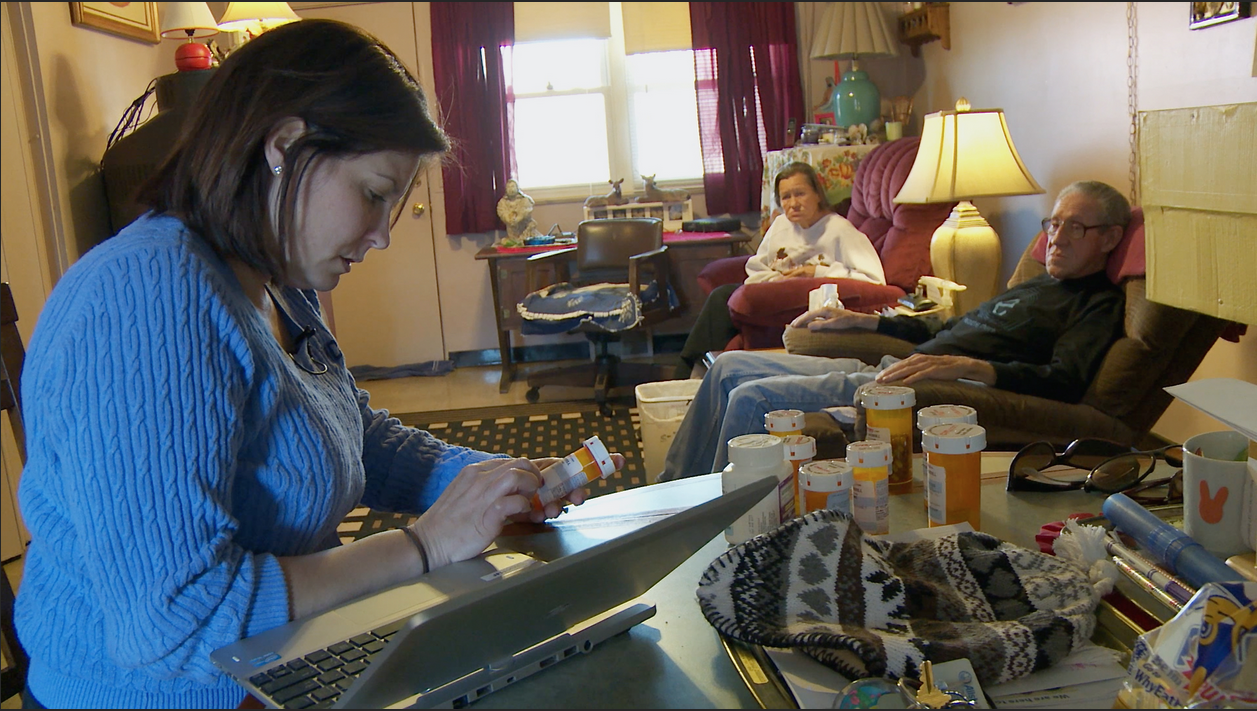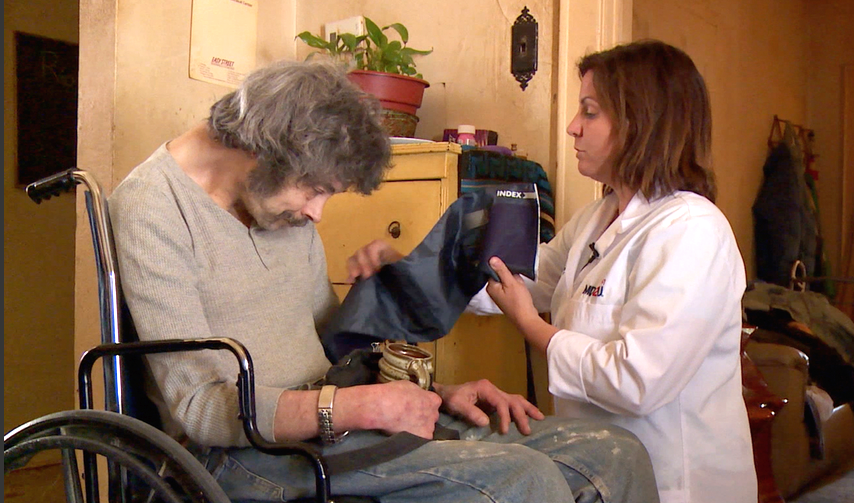The Invisible Patients
Pass Christian filmmaker Patrick O'Connor's award-winning documentary takes a hard look at marginalized patients struggling with the juggernaut of the American health care system.
- by LB Kovac
Two local screenings of "The Invisible Patients" in March:
Watch the trailer for the documentary "The Invisible Patients"
Last year, Americans visited the doctor more than 70 million times, per statistics from Azuria, Inc. Of those visits, a mere 0.6% were house calls, or visits where a medical professional went to a patient residence. Compare that to the 1960s and earlier– not even 70 years ago – when 40% or more of doctor’s visits were house calls.
The shift from home-based medical care to doctor’s office visits, clinic diagnoses, and emergency room treatment, came about in part because of medical specialization, the practice where doctors become knowledgeable in a very narrow field of medicine. Medical specialization has led to better surgery practices, advancements in medical technology, and treatments for numerous once-fatal diseases, but it offers few options for people like Roger. Roger is a part of a group called “homebound patients,” patients Medicaid defines as having “a condition [with which] leaving the home is medically contraindicated;” symptoms like pain or confusion worsen for these patients when they leave home, even if it is for doctor visits or medical emergencies.
These are the people that director Patrick O’Connor seeks to uplift in “The Invisible Patients,” people with little time, few options, and for which practiced medical attention and compassion are absolutely vital. These people are not well-served by a medical system that emphasizes medical specialization for day-to-day care.
And this is also where people like Jessica come in. Jessica is a licensed nurse practitioner (NP) in Indiana and works as part of MD2U, an “in-home primary care network” that provides regular medical attention to homebound or home-limited patients. Jessica makes house calls for patients like Roger. She visits them in their homes several times a month, providing them with the medical care that best suits their conditions. She gives physical examinations, checks vitals, prescribes medications, and speaks with the patients about their ongoing illnesses, all in the comfort of the patient’s bedroom, living room, or kitchen. Roger is lucky in at least one way – his house calls are covered by Medicaid. But the same cannot be said for Patty, one of the other patients the documentary focuses on. Patty is in her early 70s and “multimorbid,” or suffering from multiple chronic conditions, including arthritis. That’s because there is another factor in this equation: money. Patty often struggles with getting house calls, medications, and doctor’s visits covered by Medicare. Early in the film, she is dropped by her insurance for making too much money. Then, one of her more expensive medications is not covered by her insurance. Then, a doctor refuses her insurance coverage and sends her away. Although Medicare does provide some financial help, it does not cover all of Patty’s medical costs, and, due to mounting expenses, she is left without medical care.
Without Jessica, many of her patients would either be in nursing homes or completely without medical care. Patty and her husband, Wink, go eight months without medical attention, according to the film.
O’Connor, who has writing credits like “Sacred Hearts” and “Ricochet River,” says that there were even challenges to filming, largely owing to Jessica’s rather intense schedule. She sees 8-10 patients a day and drives around 60 miles, in order to be able to see them all. If it weren’t for Jessica’s manic schedule, many of these patients would have to live in nursing homes, or, worse, not get regular medical care at all. Jessica and her “team of three nurse practitioners” are responsible for more than 500 patients across two states. Not all states offer in-home health as part of Medicare and Medicaid plans. The Independence at Home project, an initiative to test the viability of in-home health services for Medicare and Medicaid patients, is in the middle of a three-year study of fourteen healthcare providers. In the first year of testing of the study, one clinic saved Medicare more than $13,000 a patient; savings like that might eventually translate to an expansion of in-home health services in other states.
“The Invisible Patients” doesn’t attempt to tie this situation up in a big red bow. There’s not a happy ending to Roger’s story; the documentary’s denouement centers on his passing from complications related to Duchenne. Jessica plainly addresses the camera and says that “he was gone” when his mother woke up that morning.
There is some hope. Because of Jessica’s services – because of the existence of in-home medical attention and his access to it - Roger spends his last few days surrounded by his family. He even gets to meet his nephew. But more work needs to be done so that other patients – patients like Patty – also have access to this kind of care. O’Connor says that “expanding the roles [of] Nurse Practitioners – allowing them to take more direct control of patient care,” some of the burden of homebound patients’ medical care can be alleviated. This will require changes to Medicaid and Medicare regulations, such as in this bill. Simple awareness is also helpful. O’Connor and his team are doing a free screenings of “The Invisible Patients” at the Pass Christian Library at 6:30 p.m. on Wednesday, March 15, 2017 and at the Bay St. Louis Library (312 Hwy 90, Bay St. Louis, (228) 467-6836) Thursday, March 30th at 6pm. By simply seeing these patients and listening to their stories, they become less invisible. Comments are closed.
|
Categories
All
Archives
July 2024
|
Shoofly Magazine Partners
Our Shoofly Partners are local businesses and organizations who share our mission to enrich community life in Bay St. Louis, Waveland, Diamondhead and Pass Christian. These are limited in number to maximize visibility. Email us now to become a Shoofly Partner!






























 RSS Feed
RSS Feed























